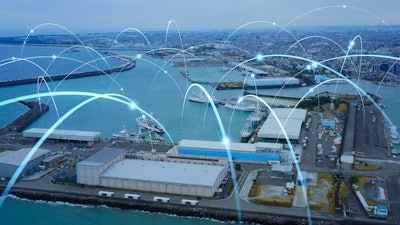
The COVID-19 pandemic disrupted freight transportation services, resulting in canceled shipments, container shortages and port delays. Coupled with labor shortages and higher energy costs, it led to every executive's most concerning environment: "uncertainty." The supply chains of the past succeeded because of this basic premise of "certainty." The great lesson of recent challenges and struggles is the necessity of building redundant approaches to achieve a great level of confidence.
Supply Chain Disruption Shines a Light on Benefits of Nearshoring
As organizations experienced hyperinflation, freight disruption and growing consumer demand, geopolitical tensions were also on the rise. Many organizations that outsourced mainly to the Asia Pacific region found themselves impacted due to supply chain strategies that were "single-threaded." Without redundant supply alternatives, they faced delays in fulfilling critical product deliveries. While outsourcing to certain regions in Asia has historically been associated with lower costs, the risks of narrow supply chain disruptions can be overcome with redundant models: offshore plus near-shore.
Taking market dynamics into consideration, companies began to explore the possibilities of diversifying their operations by bringing them closer to the U.S. as a way to reshape their supply chains to improve economic resilience. In fact, findings from a recent RRD survey of supply chain decision-makers show that, in response to global supply chain disruption and operational shutdowns, two-thirds (66%) of respondents said their organization is moving sourcing, manufacturing and fulfillment physically closer to customers and end markets.
Identifying Cost Savings Without Incurring Additional Risk
Reports indicate that U.S. companies will invest $40 billion in Mexico through 2024, making the country a frontrunner in the nearshoring boom. Beyond proximity to the United States and rapid freight channels, Mexico offers various free-trade agreements, deep resources for skilled labor, and lead times for inventory shipped from Mexico can be as little as a matter of days.
The cost of manufacturing in Mexico may be higher than maintaining those same operations in some parts of Asia. However, the shorter shipping distance delivers cost savings and helps reduce the need to carry so much inventory, ultimately giving manufacturers the ability to respond quickly to consumer demand for specific products or quantities, all without having to rework the whole system. This results in a faster speed to market and quicker delivery times for the consumer.
Companies increasingly look at ways to reduce the total cost of ownership. The ability to better predict inventory carrying and future costs (such as obsolete inventory) can help avoid inventory risk, an issue many faced as a result of the pandemic. Another way organizations are finding cost savings, especially amid a tight labor market, is through automation, which allows them to produce more inventory faster, with the same consistent quality.
Hybrid Models Present a Balanced Approach
Since a nearshoring model may not suit every organization for a variety of reasons, more and more organizations are considering a hybrid model. This approach helps mitigate risk by not putting all operations or inventory in one location. With a hybrid model, companies can get their core product from Asia before shipping in bulk to North America to deal with configuration and packaging. By finishing the product near the marketplace, companies can respond to market demands efficiently while having less inventory in the pipeline and can avoid excess and obsolescence.
It wasn't that long ago when offshoring the bulk of your operations was the smartest, most cost-effective decision organizations could make. Today, as the market shows gradual improvement and supply chains regain their stability and speed, organizations have expressed a readiness to explore nearshoring and hybrid models.
Looking ahead, we can expect nearshoring to continue to grow as U.S. companies bring elements of their production closer to home to increase the resilience and agility of their supply chains, minimize disruption and improve the total cost. Working with a partner that has previous experience and intelligence of nearby markets and can bring automation capabilities, will ultimately help mitigate risk and offset cost discrepancies between regions while realigning the supply chain.















![Pros To Know 2026 [color]](https://img.sdcexec.com/mindful/acbm/workspaces/default/uploads/2025/08/prostoknow-2026-color.mduFvhpgMk.png?ar=16%3A9&auto=format%2Ccompress&bg=fff&fill-color=fff&fit=fill&h=135&q=70&w=240)

